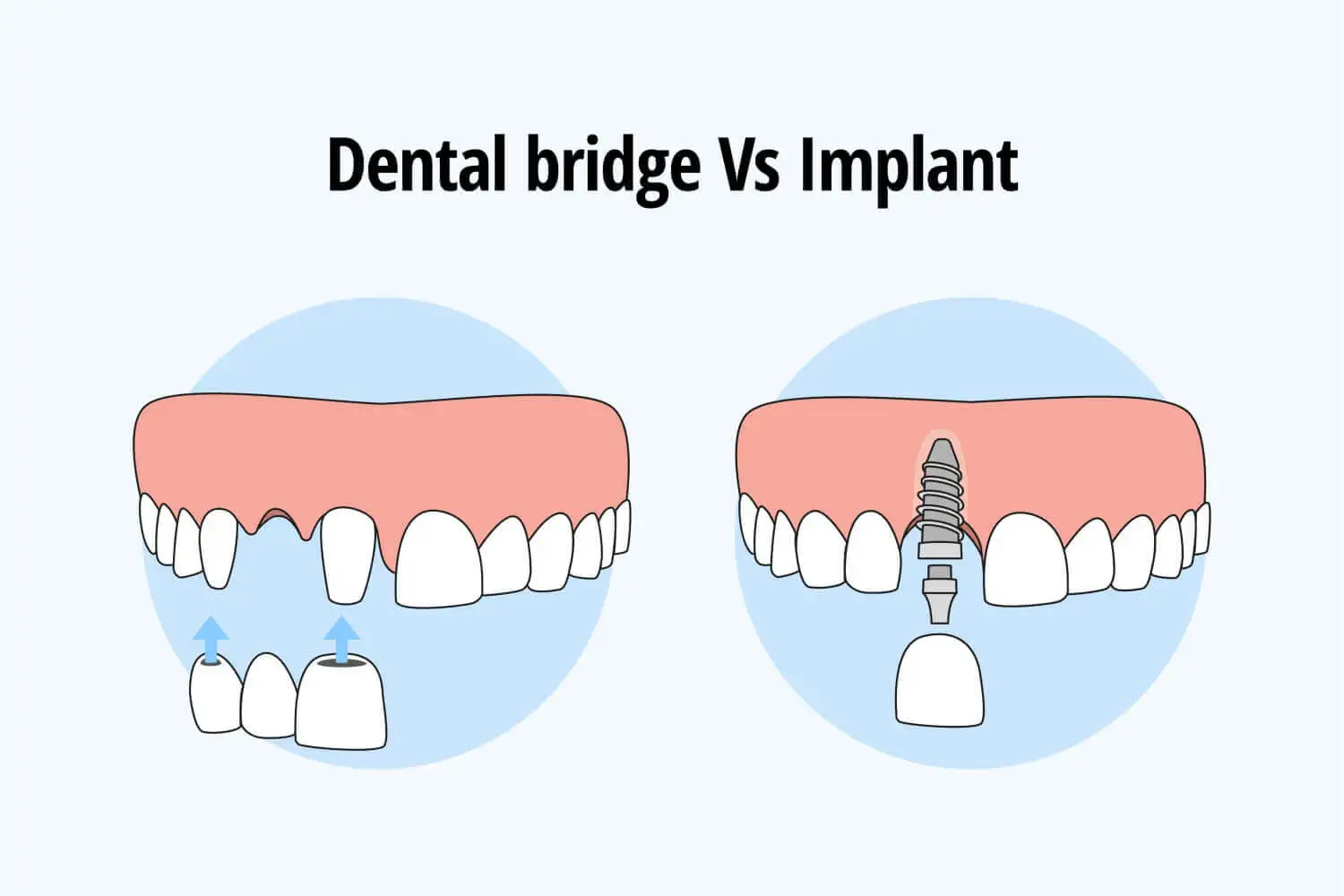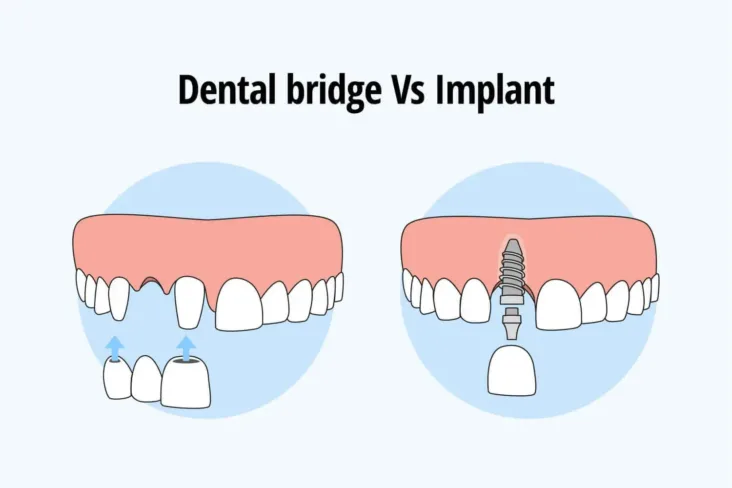When it comes to restoring missing teeth, you want a solution that not only fits your budget but also provides long-lasting results. That’s where bridges and implants come into play. In this article, we’ll explore the affordable options available for replacing missing teeth and delve into the pros and cons of bridges versus implants. So, buckle up and get ready to discover the best solution for your dental woes!
When you’re missing a tooth or a few, it can be a real confidence killer. But fear not! There are affordable solutions out there that can give you back your smile. Bridges and implants are two popular options, each with their own set of advantages and considerations. In this article, we’ll break it down for you, comparing the cost, durability, and overall effectiveness of bridges versus implants. So, if you’re on the hunt for an affordable way to restore your missing teeth, keep reading to find out which option might be the best fit for you.
Affordable Solutions for Restoring Missing Teeth: Bridges vs. Implants
If you’re looking for affordable options to restore missing teeth, you may be considering bridges or implants. Bridges are a popular choice as they are cost-effective and require less invasive procedures. They involve placing a false tooth between two adjacent teeth for support. On the other hand, implants are a more permanent solution that involves surgically placing a titanium post in the jawbone, which acts as an artificial tooth root. While implants may be pricier, they offer a longer-lasting and natural-looking result. Ultimately, the choice between bridges and implants depends on your budget, oral health, and personal preference.

Affordable Solutions for Restoring Missing Teeth: Bridges vs. Implants
When it comes to restoring missing teeth, there are several options available. Two common and affordable solutions are dental bridges and dental implants. Both of these options have their own benefits and considerations, and it’s important to understand the differences between them before making a decision. In this article, we will explore the pros and cons of bridges and implants, as well as factors to consider when choosing the right option for you.
Understanding Dental Bridges
Dental bridges are a popular choice for replacing missing teeth. They consist of artificial teeth, known as pontics, which are held in place by dental crowns on adjacent teeth. Bridges are typically made from materials such as porcelain or ceramic, which can be color-matched to blend seamlessly with your natural teeth.
One of the main advantages of dental bridges is their affordability. Bridges tend to be more cost-effective compared to dental implants, making them a popular choice for individuals on a budget. Additionally, the procedure for getting a bridge is generally less invasive and requires fewer dental visits compared to implants.
The Procedure for Getting a Dental Bridge
The process of getting a dental bridge usually involves two dental visits. During the first visit, the adjacent teeth are prepared by removing a small amount of enamel to make room for the dental crowns. Impressions of your teeth are then taken and sent to a dental laboratory, where the bridge will be custom-made. In the meantime, a temporary bridge will be placed to protect your teeth.
During the second visit, the temporary bridge is removed, and the permanent bridge is carefully placed and adjusted for a proper fit. Your dentist will ensure that the bridge looks natural and functions properly. With proper care and maintenance, a dental bridge can last for many years.
Exploring Dental Implants
Dental implants are another popular option for restoring missing teeth. Unlike bridges, which rely on adjacent teeth for support, implants are surgically placed directly into the jawbone. They consist of a titanium post that serves as the artificial tooth root, which is topped with a dental crown that mimics the appearance of a natural tooth.
One of the main advantages of dental implants is their durability and longevity. Implants are designed to fuse with the jawbone, providing a stable and permanent solution for missing teeth. With proper care and regular dental check-ups, implants can last a lifetime.
The Procedure for Getting Dental Implants
The process for getting dental implants is more involved compared to dental bridges. It typically involves multiple dental visits and a healing period. During the first visit, the implant post is surgically placed into the jawbone. After the initial surgery, a healing period of several months is required for the implant to integrate with the bone. During this time, a temporary crown may be placed to restore the appearance of the missing tooth.
Once the implant has fully healed and integrated with the jawbone, an abutment is attached to the post, and a custom-made dental crown is placed on top. Your dentist will ensure that the crown matches the color and shape of your natural teeth for a seamless result.
Factors to Consider When Choosing Between Bridges and Implants
When deciding between dental bridges and implants, there are several factors to consider. One important consideration is the health of the adjacent teeth. If the adjacent teeth are healthy and strong, a bridge may be a suitable option. However, if the adjacent teeth are compromised or in poor condition, implants may be a better choice as they do not rely on the support of adjacent teeth.
Another factor to consider is bone health. Dental implants require a certain amount of healthy bone in the jaw for successful placement. If you have insufficient bone density, your dentist may recommend bone grafting or alternative treatments to prepare the jawbone for implants.
Benefits of Bridges vs. Implants
Both dental bridges and implants have their own set of benefits. Bridges are a more cost-effective option and require a less invasive procedure. They can be a good choice for individuals on a budget or those who prefer a faster treatment timeline.
On the other hand, dental implants offer a more permanent and natural-looking solution. They provide a stable foundation for replacement teeth and do not rely on adjacent teeth for support. Implants also promote bone health by stimulating the jawbone, preventing bone loss that can occur with missing teeth.
Tips for Maintaining Dental Restorations
Regardless of whether you choose dental bridges or implants, it’s important to maintain proper oral hygiene to ensure the longevity of your dental restoration. This includes regular brushing and flossing, as well as routine dental check-ups and cleanings. Avoiding habits such as smoking and excessive consumption of staining foods and beverages can also help preserve the appearance of your dental restoration.
In conclusion, both dental bridges and implants offer affordable solutions for restoring missing teeth. Bridges are a cost-effective option that requires a less invasive procedure, making them suitable for individuals on a budget. Implants, on the other hand, provide a more permanent and natural-looking solution that does not rely on adjacent teeth for support. Ultimately, the choice between bridges and implants depends on individual factors such as oral health, budget, and personal preference. Consulting with a dentist will help determine the most appropriate option for restoring missing teeth.
Key Takeaways: Affordable Solutions for Restoring Missing Teeth: Bridges vs. Implants
- 1. Dental bridges and dental implants are both options for restoring missing teeth.
- 2. Bridges are more affordable upfront, while implants may have a higher initial cost.
- 3. Implants offer a longer-lasting and more permanent solution compared to bridges.
- 4. Bridges require support from neighboring teeth, while implants are standalone replacements.
- 5. Consulting with a dentist is crucial to determine the best option based on individual needs and budget.
Final Thoughts: Making the Right Choice for Your Smile
When it comes to affordable solutions for restoring missing teeth, bridges and implants are two popular options to consider. Both have their own unique advantages and considerations, making it important to weigh the pros and cons before making a decision. After exploring the key differences between bridges and implants, it’s clear that there is no one-size-fits-all answer. The choice ultimately depends on your individual needs, preferences, and budget.
While bridges offer a more affordable and quicker solution for restoring missing teeth, they do come with some drawbacks. For example, bridges require the support of adjacent teeth, which may need to be filed down. Additionally, bridges have a shorter lifespan compared to implants and may need to be replaced after several years. On the other hand, implants provide a long-term and durable solution that mimics the look and function of natural teeth. However, they do involve a more complex and invasive procedure, as well as a higher initial cost.
In conclusion, there is no definitive winner in the bridges vs. implants debate. It’s essential to consult with your dentist to determine the best option for your specific situation. Consider factors such as cost, longevity, aesthetics, and overall oral health. By making an informed decision, you can restore your missing teeth and regain your confidence in smiling, all while ensuring the long-term health and functionality of your mouth. Remember, a beautiful smile is within reach, no matter which path you choose!









